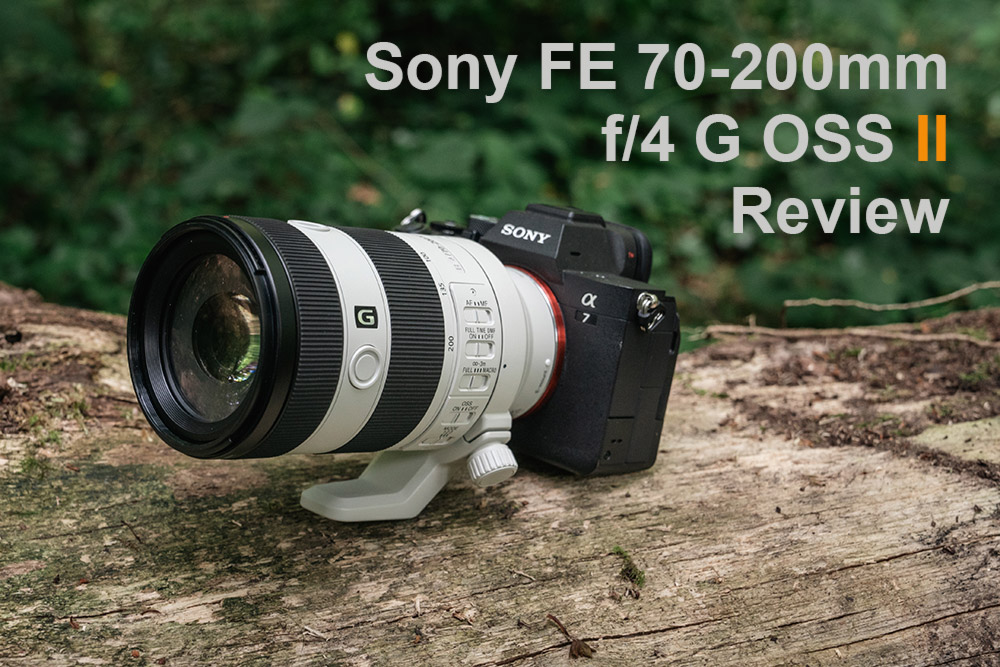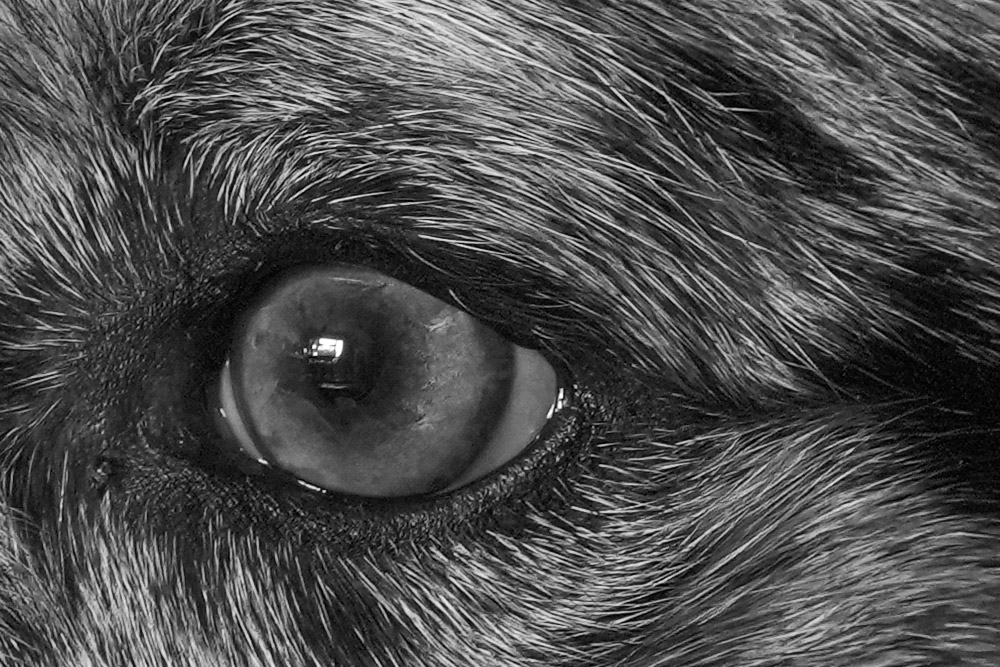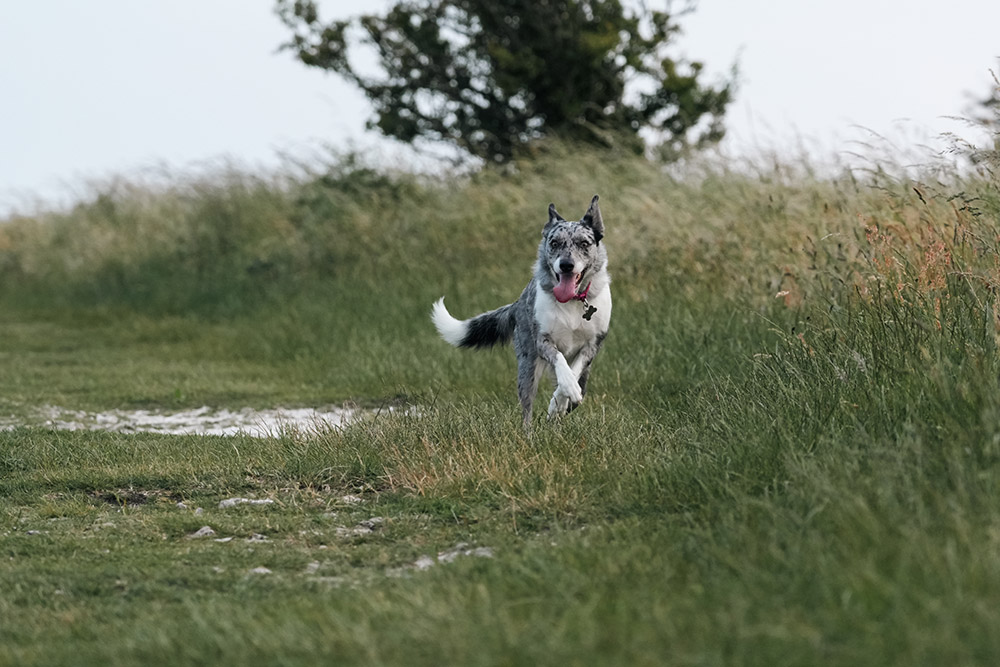- Call us: 01444 237070
- Contact Us
- Stores
- Sign In / Register
-
- Back
- Used Cameras
- Used Accessories
- Used Lenses
- Used Video
- Used Film Equipment
- Used Stock Alert
- Used Blank Test
- Sell or Part Exchange
- Used Clearance
- Recently Added Used Equipment
- Park Picks
- All Used Black Friday Deals
- Faulty
- Trade-In
- Blog
- New in
- Call us
- Contact us
- Stores
- Sign in
- Categories
- Tips & Inspiration
- Reviews
- News
- Events
- Features
- Buying Guides
- Competitions
Sony FE 70-200mm f/4 G OSS II Lens Review
Given the immense popularity of its predecessor, which has lasted for nearly a decade, the eagerly awaited release of the second-generation Sony FE 70-200mm f/4 G OSS II Lens has set high expectations. Find out if it delivers in our Sony FE 70-200mm f/4 G OSS II lens review, which includes sample photos with 100% crops and a hands-on video review.

Before we begin, it’s worth noting that despite being a full-frame lens (FE), its release coincided with the Sony A6700, indicating its suitability for APS-C cameras, where it offers an 105-300mm equivalent range.
Discover what you need to know about this second generation Sony mirrorless lens through a full specs comparison between the Sony 70-200 f/2.8 GM II vs previous generation f/4 G telephoto lens. Our review will help you choose which is the perfect one for your photography and video creation, whether you capture portraits and weddings, sports or wildlife or any other longer range subjects.

Sample image Sony FE 70-200mm f/4 G OSS II Lens @70mm with Sony A6700. Camera settings: 1/60 sec. f/4.0. ISO 1000
Key Sony FE 70-200mm f/4 G OSS II Lens upgrades
Sony has been particularly thorough with this update, improving everything from image quality and resolution to close-up quality and focus speed, while even managing to reduce the mark II lens’ size and weight. What’s more, the newer version is now compatible with E-mount teleconverters for impressive super telephoto reach and up to 1.0x life-sized macro magnification.
This effectively doubles the already impressive native 0.5x magnification, and is available across the entire zoom range.
Key Sony FE 70-200mm f/4 G OSS II features at a glance:
- G lens quality with an updated optical design
- Compatible with full-frame and crop sensor Sony mirrorless cameras
- Four XD Linear Motors for 20% quicker AF
- 0.5x (half life size) magnification across the entire zoom
- Minimum focus distance of 26cm (wide) and 42cm (tele)
- Compatible with Sony 1.4x Teleconverter and Sony 2.0x Teleconverter
- 2.0x TC creates 1.0x magnification life-sized macro
- Supports breathing compensation for video capture

100 percent crop from previous sample photo showing high resolution from the A6700 new sensor
When did the Sony FE 70-200mm f/4 G OSS II Lens come out?
On July 12, 2023, Sony made a significant announcement by launching two highly anticipated products, with the first being the flagship Sony A6700 APS-C format camera, alongside the Sony FE 70-200mm f/4 G OSS II lens. This launch highlights Sony's ability to provide cutting-edge technology while meeting the evolving needs of photographers.

Sample Sony FE 70-200mm f/4 G OSS II Lens @174mm with Sony A6700. Camera settings: 1/400 sec. f/4.0. ISO 500
How much does the Sony FE 70-200mm f/4 G OSS II Lens cost?
The Sony FE 70-200mm f/4 G OSS II costs £1,750.00, which is a step up from the previous generation £1,095.00 price tag. However, much of the technology such as XD linear motors is shared with professional lenses, including the FE 70-200mm F2.8 GM OSS II, which costs £2,599.00.
From this price comparison we can see that the 70-200mm f/4 mark 2 lens falls precisely in the middle, sitting quite comfortably between the first generation G lens and the professional G Master, but does it warrant the higher price? Let’s find out.

Sample Sony FE 70-200mm f/4 G OSS II Lens @200mm with Sony A6700. Camera settings: 1/160 sec. f/4.0. ISO 640
Sony FE 70-200mm f/4 G II image quality
Sony has improved image quality in their new 70-200 f/4 telephoto zoom lens through an optical formula and floating focusing design, which includes six special glass elements. This ensures that the FE 70-200mm f/4 G II is able to deliver higher image quality across the frame, at all focal widths.
Another standout feature of the new model is its impressive magnification capability. With a 0.5x magnification across the entire zoom range, the lens empowers photographers to capture striking half life-sized macro close-ups at any range, down to the minimum focus distance, which has also been significantly reduced.
This adds a new dimension to the lens, expanding creative possibilities and allowing creators to explore the world of macro photography, while also achieving higher quality results. It’s safe to say image quality is superior to the first generation in every aspect.

100 percent crop from previous sample photo of squirrel
Teleconverter compatibility
You can increase the reach of the newer zoom lens with either of the Sony FE 1.4x and Sony FE 2.0x Teleconverters. This is a bold move which may entice some photographers who were considering the GM lens, although adding a TC will reduce your aperture by one and two stops respectively, which favours the GM’s brighter aperture. That said, you can still achieve gorgeous bokeh effects at f/4.0 and narrower apertures, as demonstrated by the professional Sony 100-400mm F/4.5-5.6 GM lens.
Utilising a 2.0x teleconverter takes the magnification to a whole new level, achieving true life-sized macro images with 1x life-sized magnification. This elevates the lens's versatility beyond that of a typical casual macro telephoto lens.
With this expanded capability, photographers can capture distant wildlife, sporting events, and intricate details that would otherwise be imperceptible to the naked eye. The convenience of having all these features in a single portable lens further enhances its appeal, and will no doubt make it the goto choice for a wide range of photographic situations.

Sample action Sony FE 70-200mm f/4 G OSS II Lens @135mm with Sony A6700. Camera settings: 1/1000 sec. f/4.0. ISO 2000
Autofocus improvements
Out of several notable improvements, autofocus is perhaps the most instantly gratifying, with four Extreme Dynamic (XD) focus motors moving two independent focus groups extremely quickly and quietly. This provides you with fast, accurate and quiet AF, that is around 20% quicker than the first generation lens.
If you’re lucky enough to shoot with an alpha 1 camera, the 70-200mm G lens will keep up with completely blackout-free continuous shooting at 30fps, up from 20fps in the previous gen. The newer model also supports tracking while zooming, which is useful when tracking a subject, which moves closer or further away.

Sample 5 Sony A6700 with Sony FE 70-200mm f/4 G OSS II Lens @200mm. Camera settings: 1/400 sec. f/4.0. ISO 1250
How user-friendly is the Sony FE 70-200mm f/4 G II?
Sony has included three customisable focus hold buttons and several lens barrel controls to ensure the FE 70-200mm f/4 G OSS II is easy to work with and adaptable to a quick workflow. Full time DMF is available, a focus limiter, focus lock and a new third optical stabilisation mode for erratic moving sports or wildlife.
You can also support the lens with a tripod or monopod via the tripod mount foot, for a more comfortable shooting experience over extended periods of time.
Full time DMF (direct manual focus) is a very useful feature which can be used in a range of situations. For example when a subject moves behind some foliage, another subject or is partly covered by any obstacle, you can manually adjust focus perfectly instantly, or gain approximate focus manually, then let the camera take over AF once again.
Sony 70-200mm lens specs comparison
The table below compares key specifications between the three Sony 70-200mm lenses and highlights not only how the gap between G and GM lenses is narrowing, but how capable, and portable more evolved lenses are becoming.
|
|
Original FE 70-200mm f/4 G OSS |
||
|
Optical elements / groups |
19 / 13 |
21 / 11 |
17/14 |
|
Aspherical elements |
1x AA / ASPH x1 |
2x AA / ASPH x1 |
1x XA element |
|
ED |
1x Super ED and 3x ED |
1x Super ED and 2x ED |
2x Super ED and 2x ED |
|
Minimum focus distance |
0.26m – 0.42m |
1.00m – 1.50m |
0.4m – 0.82m |
|
Max. magnification |
0.5x (entire zoom) |
0.13x |
0.3x |
|
AF actuator |
4x XD linear motors |
2x Linear motor |
4x XD linear motors |
|
Focus system |
Floating internal focus |
Internal focus |
Floating internal focus |
|
Zoom system |
Extending zoom |
Internal zoom |
Internal zoom |
|
Aperture blades |
9 |
9 |
11 |
|
Lens coating |
Fluorine |
Nano AR |
Fluorine |
|
Teleconverter compatible |
Yes |
NA |
Yes |
|
Filter diamteter |
72mm |
72mm |
77mm |
|
Dimensions |
82.2 x 149mm |
80 x 175mm |
88 x 200mm |
|
Weight |
794g |
840g |
1045g |
The newer Sony 70-200mm f/4 Mark II lens unquestionably offers several brilliant upgrades, solidifying its position as a comprehensive improvement over its predecessor. Notably, it stands out for its close focusing distance and high magnification, which caters directly to enthusiast and professional photographers who value lenses capable of capturing close-up shots with exceptional detail. It’s also the lightest model by quite a margin, which is a benefit most photographers will thoroughly enjoy from day one.
Best accessories for the Sony 70-200mm f/4 G OSS II Lens
With its 72mm thread you can find screw-in lens filters and square filter systems to meet any budget and shooting requirement. Choose anything from a cost-effective UV filter to reduce haze and protect the front element, to premium Variable ND filters to adjust the aperture and shutter speed in brighter conditions.
Thanks to its compact size, you can use a relatively small lens case such as the Think Tank Lens Case Duo 20, or an expanding top loader like the Tenba Axis V2 4L Top Loader Black for quick access.
A tripod such as the Peak Design Travel Tripod Carbon Fibre would make a great addition, especially for landscapes and situations where the subject isn’t moving around too much. A monopod comes in handy for panning and faster moving subjects, and we love the 3 Legged Thing Alan 2.0 Monopod And Docz2 Foot Stabiliser Kit for its versatility and stability.
Who is the 70-200mm f/4 G lens for?
The popularity of the 70-200mm zoom range is well-deserved due to its exceptional versatility. From portraits to sports, wildlife to landscapes, the 70-200mm range excels in delivering impressive results for several genres of photography and videography. The zoom range, combined with the option to use teleconverters, provides you with an even more powerful tool to tackle a diverse range of subjects.
APS-C users benefit from the crop factor, which naturally extends the reach of a lens, making the 70-200 zoom range ideal for more distant subjects, including sports, wildlife and birds.
Sony 70-200mm f/4 G OSS II video review
Watch our hands-on video review here.
The 70-200mm zoom range, combined with the option to use teleconverters, provides photographers with a powerful tool to tackle a diverse range of subjects, making it a popular choice among professionals and enthusiasts.
By addressing the demand for close-focusing and teleconverter compatibility, Sony has delivered a telephoto zoom lens that offers remarkable versatility. Whether photographing intricate details, exploring the world of macro photography, or simply seeking greater creative freedom, the Sony 70-200mm f/4 Mark II satisfies most needs, as well as being lighter and more compact.
Order your second-generation Sony FE 70-200mm f/4 G OSS II today to make use of it’s comprehensive suite of updates for your content. You can also grab a free quote if you’re considering trading-in camera equipment which you don’t need, to offset the cost of upgrading.
Share this post:
By Nick Dautlich on 12/07/2023
Nick Dautlich
Senior Content Writer and Product Reviewer
Nick Dautlich is the Senior Content Writer and Product Reviewer at Park Cameras, with over 15 years of photography experience. A Sony Imaging Professional and expert reviewer, Nick has worked with major brands such as Canon, Sony and Nikon. His work is also featured on Vanguard World UK’s website, Capture Landscapes, and Shutter Evolve. Nick’s photography includes National Trust projects and magazine covers and he is passionate about landscapes and storytelling. Nick also enjoys hiking and teaching his children about nature. Learn more on his profile page.

Trade in your old equipment
Fast and easy trade in service ensures your old gear is collected efficiently and you are paid quickly! It's very simple to trade in your unwanted photography gear. Just head over to our dedicated Sell or Part Exchange page, fill out the details, and we'll get back to you with an offer for your old gear. Take the cash, or put it towards the cost of your new gear. It's up to you! Find out more
sign up to the newsletter
Keep up to date on the latest photography news, events and offers. Sign up now